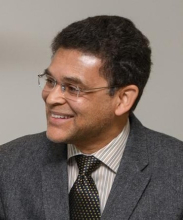CEE Seminar: Modular Chiral Origami Metamaterials

Margareta E. Augustine Professor of Engineering
Princeton University
Abstract: Metamaterials with multimodal deformation mechanisms resemble machines, especially when endowed with autonomous functionality. A representative architected assembly, with tunable chirality, converts linear motion into rotation. These chiral metamaterials with a machine-like dual modality have potential use in areas such as wave manipulation, optical activity related to circular polarization and chiral active fluids. However, in previous literature, the dual motions are essentially coupled and cannot be independently controlled. Moreover, they are restricted to small deformations, which limits their applications. We establish modular chiral metamaterials, consisting of auxetic planar tessellations and origami-inspired columnar arrays, with decoupled actuation. Under single-degree-of-freedom actuation, the assembly twists between 0° and 90°, contracts in-plane up to 25% and shrinks out-of-plane more than 50%. Using experiments and simulations, we show that the deformation of the assembly involves in-plane twist and contraction dominated by the rotating-square tessellations and out-of-plane shrinkage dominated by the tubular Kresling origami arrays. Moreover, we demonstrate two distinct actuation conditions: twist with free translation and linear displacement with free rotation. Our metamaterial is built on a highly modular assembly, which enables reprogrammable instability, local chirality control, tunable loading capacity and scalability. Our concept provides routes toward multimodal, multistable and reprogrammable machines, with applications in robotic transformers, thermoregulation, mechanical memories in hysteresis loops, non-commutative state transition and plug-and-play functional assemblies for energy absorption and information encryption.
Bio: Paulino is the Margareta E. Augustine Professor of Engineering at Princeton University. His seminal contributions in the area of computational mechanics include the development of methodologies to characterize the deformation and fracture behavior of existing and emerging materials; topology optimization for large-scale multiscale/multiphysics problems; variational methods; deployable and adaptable structures; and origami engineering (topic of my lecture at UCI). He is a fellow of ASME, EMI, AAM, USACM, IACM, SES and ISSMO. He received the Drucker Medal and the Melville Medal of ASME, Mindlin Medal of ASCE, Reddy Medal from Mechanics of Advanced Materials and Structures (MAMS 2020), theEringen Medal from SES and Belytschko Medal twice, one from ASME and one from USACM. He also received the 2015 Cozzarelli Prize from the National Academy of Sciences, “which recognizes recently published PNAS papers of outstanding scientific excellence and originality.” He is a member of the U.S. National Academy of Engineering and a former President of SES. More information about his research and professional activities can be found at the following link: http://paulino.princeton.edu/
Share
Upcoming Events
-
CEE Seminar: Walt Disney Imagineering, Construction Management – Internship Opportunities
-
MSE 298 Seminar: Stretching Possibilities: Strain-Tuned van der Waals Materials
-
MSE 298 Seminar: Low-Dimensional Quantum Materials Design Through Atomically Precise Film Synthesis
-
CBE 298 Seminar: Precision Engineering of Macromolecular Systems as Transducer Biomaterials
-
MSE 298 Seminar: Architected Materials for Energy and Health Care - The Spinodal Advantage
